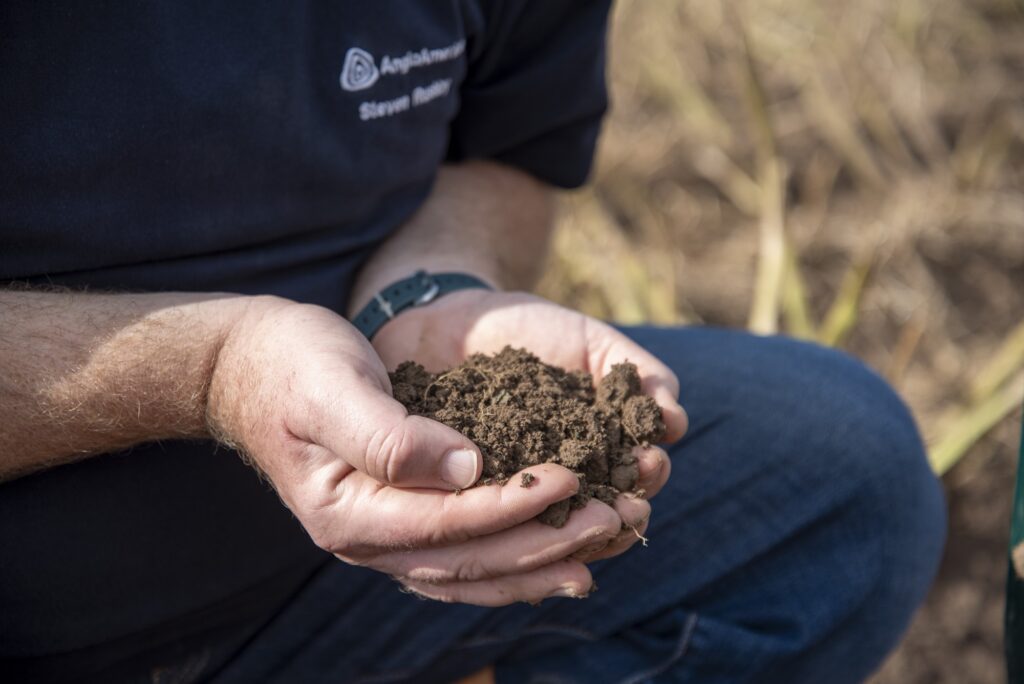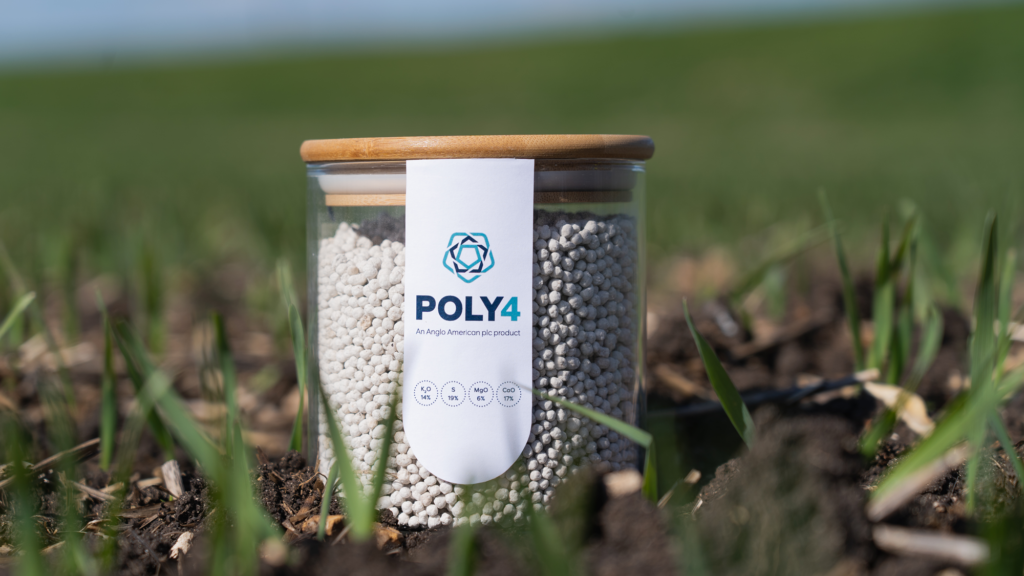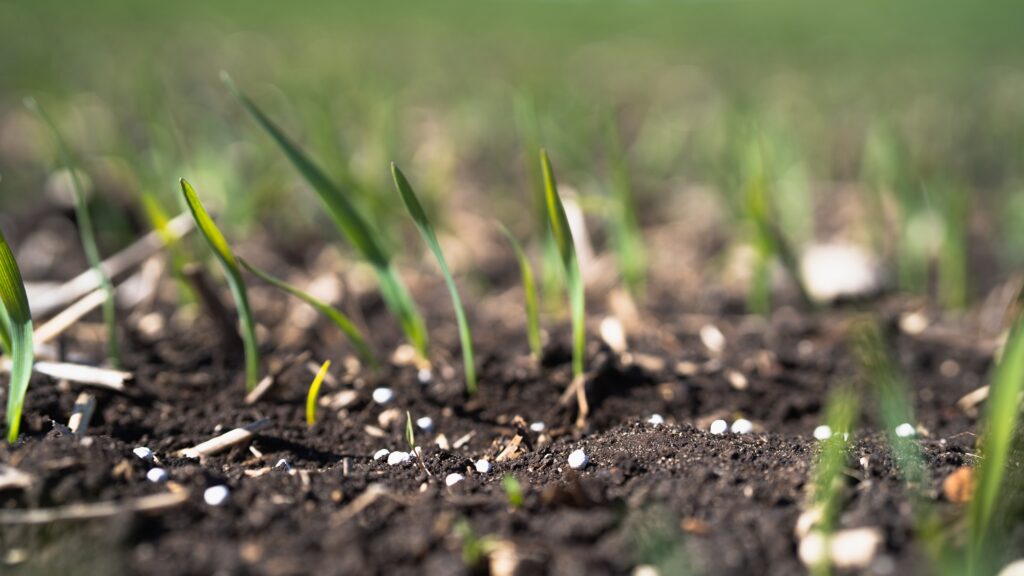Anglo American exhibited their natural mineral polyhalite fertiliser ‘POLY4’ and Soil Scientist, Kathryn Bartlett gave a talk on how long-term soil management plans can improve soil fertility.
You will have heard it many times already how fundamental soils are to the wellbeing of our planet. Intrinsically knowing the value of good soil-based understanding, is the foundation of any growing system (excluding of course aquaponics!). Agriculture is recognised more and more as one of the drivers of possible mitigation of climate change, and as an industry with vast hectares of land on which significant gains could be achieved. Farmers are ever more increasingly expected to provide services in keeping with enhancing soil productivity and health. The job remit is massive: produce more and better-quality crops, with limited good quality soil and do that in an environmentally responsible manner. No small ask.

One of the major challenges we face in addressing soil productivity and health is the inherent variability of soils. The UK alone has hundreds of different soils and the landscape variation within field can be significant, affecting the management needs of this land. Therefore, ‘one size fits all’ solutions will not work, and we must rely on more detailed understanding at an appropriate scale to the management need, this is further hampered by soil data often being held by several institutions and not always readily available depending on your location.
The story is further complicated when we seek clarity on what is ‘soil health’ and what measurements can conclude this. The Food and Agriculture Organisation of the United Nations Intergovernmental Technical Panel on soils defines it as: ‘The ability of the soil to sustain the productivity, diversity, and environmental services of terrestrial systems’ which of course means that it is a dynamic concept changing with the anthropogenic drivers on that land.
Soils need to be considered in three dimensions – look beyond the surface at a complex world and intersection between physics, chemistry, and biology. Soil structure and texture regulate pore spaces, aeration, and drainage. Whilst clay particles in your soil regulate the nutrient availability along with soil organic matter which plays many other important roles such as gas exchange and affecting water movement in soils. Not forgetting that soils are one of the most biodiverse terrestrial systems – they are the recycling centre of the earth driving much of the resource we need to provide good quality food. However, with a third of global soils classified as degraded we are at greater risk of reduced production, not only in terms of volume, but in nutritional quality. Fertile productive soils form the basis to achieving this. Therefore, practices that reduce erosion, minimise soil organic carbon loss, correct nutrient imbalances, combat soil acidification, halt and remediate contamination and prevent soil compaction are some of the practical measures we can put in place to combat this.
To add one last complication to the thinking, we need to also consider soil management as a medium to long-term view when we are framing it within the lens of agrifood systems. Soil processes and changes happen over a scale of years and better to watch the long view to truly gain insight as to the management impacts on any given piece of land.

Whilst there is no single solution to addressing soil fertility problems, we now have many tools on hand to help. Focusing on providing the best physical, chemical, and biological conditions is the key to maintaining a more balanced and resilient soil system in the long term to provide increased functionality.
Things to keep in mind:
- Keeping the soil covered as much as possible to help prevent erosion losses.
- Selecting cover crop mixes with differing plant rooting structures to aid water infiltration and compaction zones.
- Keep soil trafficking to a minimum to avoid soil compaction.
- Where possible try to increase soil organic matter inputs.
- Provide balanced nutrition to ensure no harmful effects on soil pH and chloride levels.
- Regularly monitor your soils (visually and chemically) and keep a record to monitor long term trends.
Kathryn Bartlett is a soil scientist who is working on unpicking the interactions between polyhalite and soils. Building up this understanding of interactions will unlock new and innovative crop nutrient solutions as part of a global need to improve soil health/ performance that enhances crop nutrient use efficiency and land management practices. Kathryn holds a PhD in Soil Microbial Ecology of arable agricultural systems from the National Soils Resources Institute at Silsoe, Cranfield University. She has worked on projects ranging from nutrient cycling in northern peatlands through to helping inform UK soils policy. She is an honorary member of the British Society of Soil Science.


